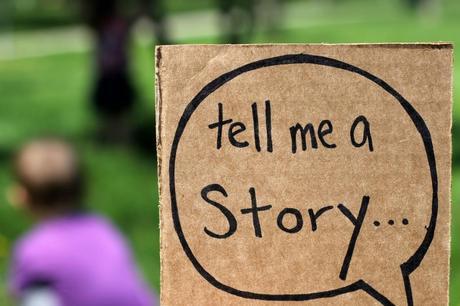~Simon Sinek, Startwithwhy.com
One of the biggest secrets to selling your products or services online is to remember the above quote and more importantly put it into practice.
What we are talking about here is writing a great product description or an enticing service page, which engages a user enough for them to move through your conversion funnel. We are talking about how you can do more with a block of text to ensure that you are the website someone uses – and not your competitors. It’s time to tell the story of your product and engage your user.
Telling a Product Story
It’s an odd turn of phrase, I admit. But let me explain about how a story can make the difference between a conversion and loyalty, and a bored user who shops with your competitor.
There are two main types of Product Description:
- Features of a Product (eg for an ink cartridge “prints 2000 pages”)
- Benefits of a Product (eg for a dress “looks amazing on any figure”)
But these two alone won’t really sell many products. Ok, if you are selling say a reel of electrical cable then the features of the product and spec of the product are what is needed. And if you are selling clothing on eBay you are probably just going to talk about the benefits of a product. But in the real world they don’t achieve much alone – you get a pageview and normally a person clicking off the page unengaged and unlike to recall your site.

Source: craftingconnections.net
So, option 3 in writing a product description is to Tell A Product Story
A product story is not about writing 1000 words simply because I say you should, it’s not about writing and writing and thinking “oh this is no good” and then deleting it and trying again. A product story is about writing something simple, something elegant and something catching – something that sells.
The key constituents of any Product Story are the features and the benefits, but it’s about creating a vivid connection in the users mind. It’s not about what it does today, its about what it can help you to do tomorrow.
An example of this is a home ink jet printer – it prints 2000 sheets and makes your word document look lovely in multi-colour just whats needed for your teenagers GCSE work. But that isn’t what is going to sell it, all printers do that… so because we all know what it can do in its basic form, printer manufacturers focus on something else, you and your family. They talk about amazing quality photos which you can print out on this £40 printer that will remind you of your holidays when you’re writing your next white paper – it’s this type of distraction psychology that sell’s boring products like printers. A great photo printer with a slower throughput of work documents will sell over a printer that does twice as many pages per minute and photos (but doesn’t tell you about the photos and the story of them)… storys sell products.
Lets look at 5 key features of a good Product Story
1 – Write For Your Audience, NOT Your Boss
This is my number one tip for anyone writing content for ANY platform, from your products in your online store to social media and emails. Know your audience.
You need to consider what you are selling and who your ideal audience is. There are lots of questions around voice and tone you should use, for example should you be friendly and fun or should you be professional and serious. Should you be casual or formal in your product descriptions? The answer is usually some point in the middle, but until you have asked your audience (yes asked them and not just looked at a bunch of other websites) you won’t truly know – thats why you will see on council websites and other big websites a pop-up asking you to take part in a survey about the site, so they can improve it.
So get out there, email your users, call them up, chat on social media – do anything to talk to them and ask what they want – the audience is your paymaster really, not your boss!
A good idea could be to create a set of user personas for your website.
2 – Cut the BullSh*t Jargon, Unless You Are Talking to That Audience
One thing that I’ve always done here on SEOAndy is to cut out the technical jargon, buzzwords and any other confusing stuff. I know, as a person with dyslexia, that jargon is hated, acronyms are hated and actually even a more sophisticated audience doesn’t want to have to try and recall what the hell you mean sometimes. So cut it out!
You may want to use jargon because you think it makes you look like an expert, well here is a sentence that may change your life. “You look like a moron, not an expert” – there is a time and place for jargon and acronyms, your services pages and product descriptions are not them. If you need to then add an extra page or a downloadable document, but filling your description with jaron only makes you look and sound like a moron (at least in my view).
Remember, too much information or too much detailed information can confuse a user and make them click away. Unless you are 100% sure it is what they want at this stage in a buying process DO NOT DO IT.
3 – About the “Whatever” Phrases
Phrases such as “excellent quality”, “this is amazing” and “best on the market” are all what I call the ‘Whatever’ phrase. People here them and ignore them thinking ‘yes of course it is’ because EVERYONE says it, boring boring same old stuff – it doesn’t sell your product it just makes you sound like you’ve had a marketer write your descriptions who is from the 80′s and hasn’t moved on.
By including the ‘Whatever’ phrases you are actively dis-engaging the user – as soon as you begin that process they will quickly read on and not remember it and probably move on from your site or will instantly hit back and get off your site. They will NOT buy your product or service.
If you want to show how amazing your service is, put up a case study from that service page. Want to sell a product have testimonials on the site, real ones, let them do the talking for you – think about amazon, they sell so much in part because they have open and honest reviews on their site. People sell products, cheap marketing tricks don’t.
4 – Engage Your User’s Imagination
Let’s inject some science into this.
Studies have proven that engaging a readers imagination is likely to increase the desire of that person to own a product.
So how do you engage a users imagination?
Its simply in the turn of phrase you use. So for example if you are selling a BBQ, you can tell the facts and you can explain how quickly it cooks as a benefit but that may not get you over the finishing line to someone paying for the product. What may though is engaging the imagination and talking about “being a super chef” and a “family hero” with your “amazing skills for burger flipping” – its about selling the life style and them imagining themselves using the product.
If you can get them to imagine using your product or service, then hey presto you’ve got a sale.
5 – Actually, Give Them A Story

Source: Team Spirit
So you have engaged their imagination and you’ve written something for your user persona. Now turn it into a story. Give them a real reason to buy from you and not your competitors, make yourself stand out.
Great examples of this can be found particularly in ladies fashion and cosmetics – its about selling not just the lifestyle (as with a printer) but also the very essence of that lifestyle, the “feel good factor”.
A good example is this AX Paris Dress from Fuchia.co.uk.
Be the centre of attention with this beaded shoulder stretch fabric bodycon dress. A definite must have for this season!
Two simple sentence’s, One killer product description that sells and sells.
Finally, don’t forget that a picture can speak 1000 words in the press, online it can be worth much more. A great example of this is the nice service descriptions of team building activity organisers Team Spirit coupled with the activities in action to the right – it really show cases how much people enjoy the activities and sells the product for them.
Original Content by SEO Andy @ People don’t buy what you do, they buy why you do it. – The Online Selling Secret You Never Knew

